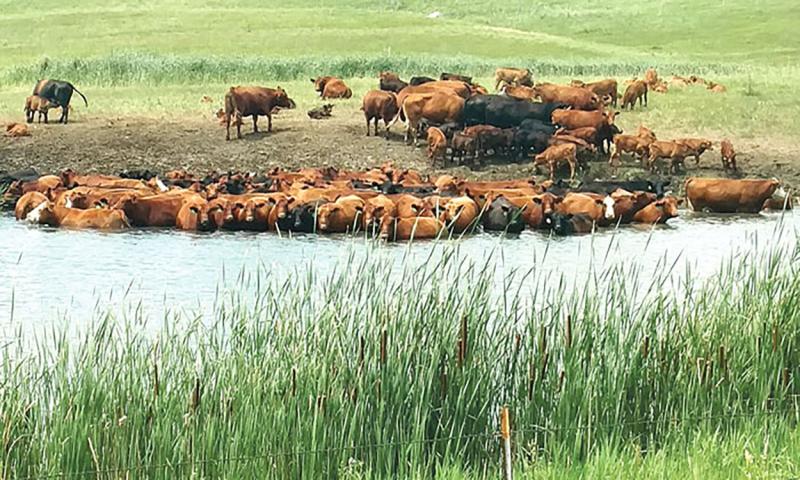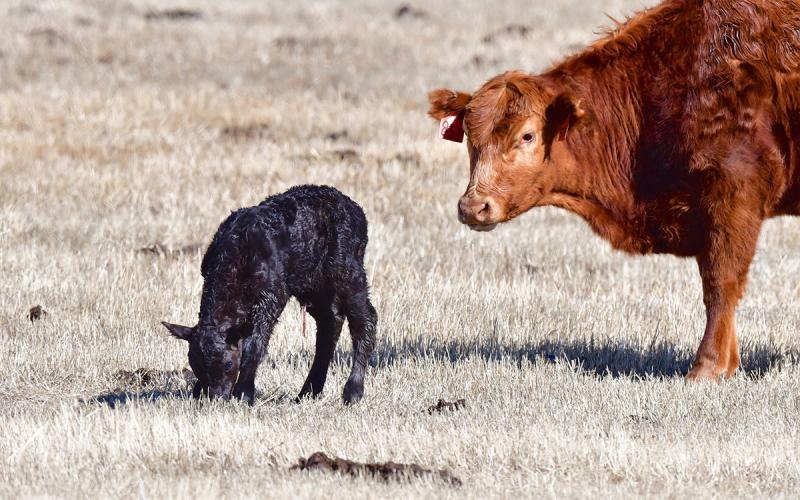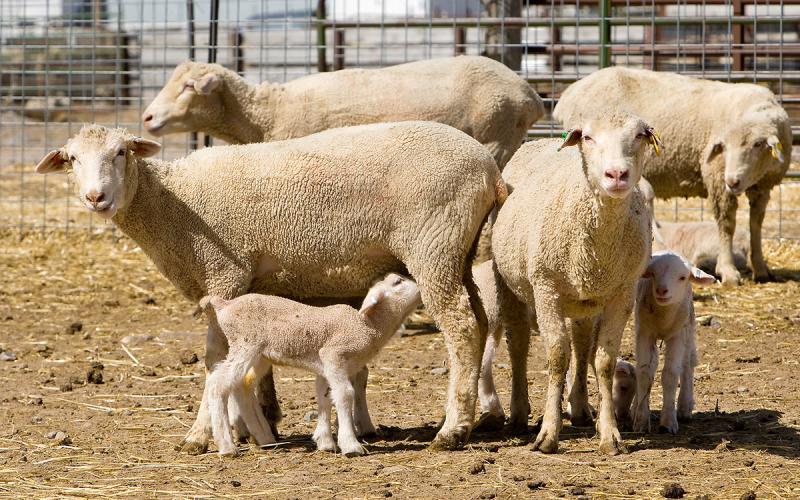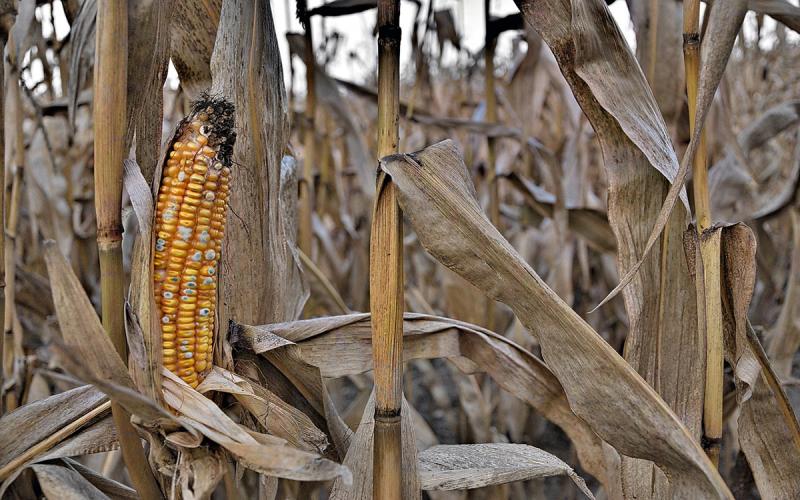
Written by Sydney Vanderhoff, former SDSU Extension Beef Nutrition Field Specialist.
Unlike humans and horses, cattle cannot sweat efficiently to cool themselves off. Therefore, hot weather and humidity can be very hard on cattle. Overheated cattle will be panting and drooling to help alleviate some of the heat.
On these hot events, cattle are often found standing in water, whether it is a pond, river, or stream in their pasture, or standing next to the water trough. Providing adequate shade and water during heat stress events is critical for cattle. Cattle experiencing heat stress will have increased respiration rate, increased body temperatures, reduced intake, increased water intake, become restless, spend more time standing, and, in severe cases, may die. All cattle experience heat stress, whether they are in the feedlot or out on pasture. Regardless of location and production stage, management techniques during a heat stress event are similar. Warren Rusche provides more information about heat stress in feedlot cattle in the article, Heat Stress in Feedlot Cattle.
While focus can shift to feedlot cattle, due to their increased body condition, let us not forget about the cows and calves that are out on pasture. While they might not experience heat stress to the degree of a feedlot calf, they still experience it and need relief. Providing some form of escape from the sun can be as simple as some shade trees for the cattle to stand under. Providing 24/7 access to water can keep cows more comfortable during times of heat stress. Due to cattle drinking more water during heat stress events, often areas near the waterer become overgrazed and trampled. Providing multiple water sources could help encourage more uniform grazing. Proper fly control protocols are also important, as flies add to the stress on hot days.
Watching the weather forecast can help producers prepare for heat events and make management decisions to help their cattle. Heat events are not something we can avoid, but they are something something we can be prepared for. Hopefully, the elevated temperature and humid days are numbered, and cooler weather is ahead!


